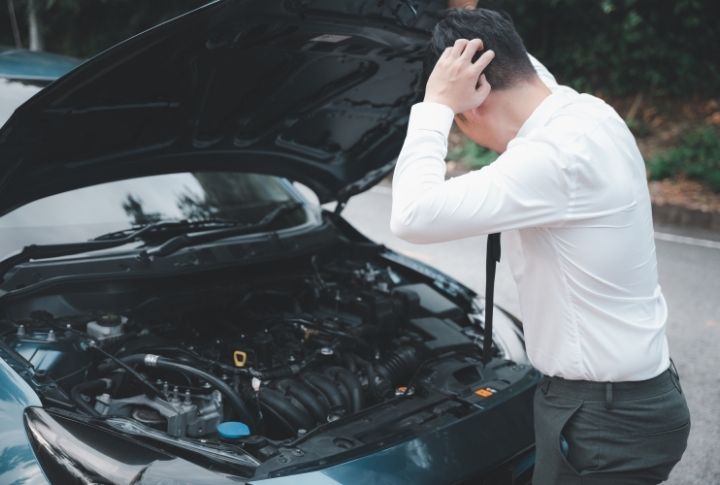
15 Cars With Engine Issues You Might Want to Avoid

Since the advent of automobiles, carmakers have built hundreds of engine configurations, and statistically, it’s impossible to assume they’re all dependable. Despite their brand reputation, some cars have fallen short in the powertrain department. With engine replacements costing a few grand, here are 15 cars you should think twice about, especially those recalled for safety concerns.
BMW 5 Series, Especially 550i, X5, X6, 750i, and 650i

Although the BMW 5 Series had excellent handling, its N63 4.4 Biturbo engine was below par. The turbochargers between the cylinder rows generated excessive heat, worsened by a faulty cooling system, and led to damage. Thankfully, BMW improved on post-2013 models. If you have one, you can use a catch can and injector cleaner to increase reliability.
Cooper (2007–2012)

The Mini Cooper hatchback is ideal for city driving, but the owners often complained about the stop-start system, particularly with the 174hp N14 engine, which is prone to stalling. Its R56 chassis ended up with poor mechanical quality due to cost-cutting in development by Peugeot. In 2011, BMW introduced the improved N18 engine, but it also had its issues.
GMC Acadia (2007–2012)

Introduced in 2006, the GMC Acadia debuted as a 2007 model with a front-wheel drive despite its SUV build. This seven-seat vehicle was perfect for family trips. However, this GMC had a failing power-steering pump, especially during tight turns, and an engine prone to failure, with owners reporting shuddering and vibrations after 100,000 miles.
Dodge Dart (2013–2016)

The carmaker revived the Dart in mid-2010 with significant issues, particularly its whining engine and transmission system. The 2013 model garnered over 2,000 NHTSA complaints and six recalls, earning the “Avoid Like the Plague” label from its critics. By 2016, Dodge discontinued the Dart, leaving it as a brief and troubled chapter in automotive history.
1976 Chevrolet Cosworth Vega

John DeLorean built this car to compete with European imports like the BMW 2002 tii and Alfa Romeo GTV. Although its Cosworth-engineered dual-overhead cam engine initially impressed, it soon gained a reputation for poor reliability and short lifespan. The high silicon content in the engine blocks led to rapid wear, reducing its power from 120 to 110 HP.
Jeep Cherokee (2014–2017)

It combines good ride quality, supportive seats, a quality stereo, and adaptive cruise control. However, the fifth generation had transmission issues, causing “shuddering and bumping” when stopping. The 2018 model improved with the 850RE transmission, but earlier versions had problems with accessory belts and pulleys, engine mounts, and fluid leaks.
Chevrolet Citation

Hopes were high for the Chevrolet Citation when it launched in 1979 as a 1980 model with more space and better fuel economy than its predecessor, the Nova. However, recalls and lawsuits severely impacted sales. Although it had a 2.8-liter V6 with 117 HP, the base 2.5-liter Iron Duke engine was noisy and underpowered at 90 HP.
Toyota RAV4 (2001–2005)

While Toyota has a solid reputation for producing reliable sedans and SUVs, models with the D-CAT engine face severe criticism for excessive emissions. This issue is often due to a faulty engine control module, which can deteriorate without repair. Other models with RAV4 engines that smoke like chimneys include the Toyota Avensis, Toyota Corolla Verso, and Lexus IS220.
1981 Cadillacs With Cadillac’s L62 Engine

In 1981, Cadillac released the V8-6-4 engine, a 368-cubic-inch V8. According to their design, they improved fuel economy by deactivating cylinders under low-load conditions using computer-controlled solenoids. Though promising on paper, it struggled in practice, causing erratic performance. Available only in 1981 for non-fleet use, most owners quit using the system due to its unreliability.
Subaru Forester (2011–2015)

Subaru fitted this Forester with standard all-wheel drive and plenty of rear-seat cargo room to attract families. However, its first-generation 2.0D powertrain was underwhelming. It often failed with suspension breakdowns, frequent injector failures, oil soot buildup, and gearbox issues. With this high-maintenance engine, you’d also want to sidestep the 2008-2020 Outback, Legacy, and Impreza.
Nissan Pathfinder (2013–2016)

You don’t always see a car with roomy, upscale interior and easy-to-use tech features at the back of its class. But this fourth-generation Pathfinder model may as well deserve the spot. The CVT transmission has a truckload of poor reviews thanks to recurrent issues that affect engine performance. Worse still, replacing it costs between $3,000 and $8,000.
Volkswagen Jetta (2006–2014)

This car strikes a good balance between handling, interior, and extensive features. But, it has a less reliable 1.2 TSI engine, which develops timing chain issues after 30,000 miles and misfires from frequent ignition coil failures. The engine is also known for high oil consumption due to clogged PCV valves, which are inexpensive to replace.
Chrysler 200 (2014)

The 2014 Chrysler 200, a four-door midsize car with a V6 option, struggled to stand out in its category due to significant engine issues. Common problems include the engine shutting off while driving, transmission issues, and vibrations at highway speeds. These issues make it less reliable than other midsize cars, with owners reporting higher repair costs.
Hyundai Tucson (2010–2015)

Sold as the ix35 in certain markets, this car was popular in the compact crossover segment. However, in 2021, the NHTSA recalled up to 3 million Hyundai and Kia vehicles (different models) due to fire complaints linked to their Theta II engines. The flawed engines had faulty connecting rod bearings that caused engine damage and oil leaks.
Ford Focus (2012–2018)

The redesigned 2012 Ford Focus aimed to lead technology and fuel efficiency in the competitive compact car segment. Despite its smooth 2.0-liter engine, the 6-speed automatic transmission in earlier models had quirky shifts. Notably, 2012 and 2013 vehicles with the 1.0-liter Ecoboost stuffed from coolant leaks, potentially causing engine failure.


